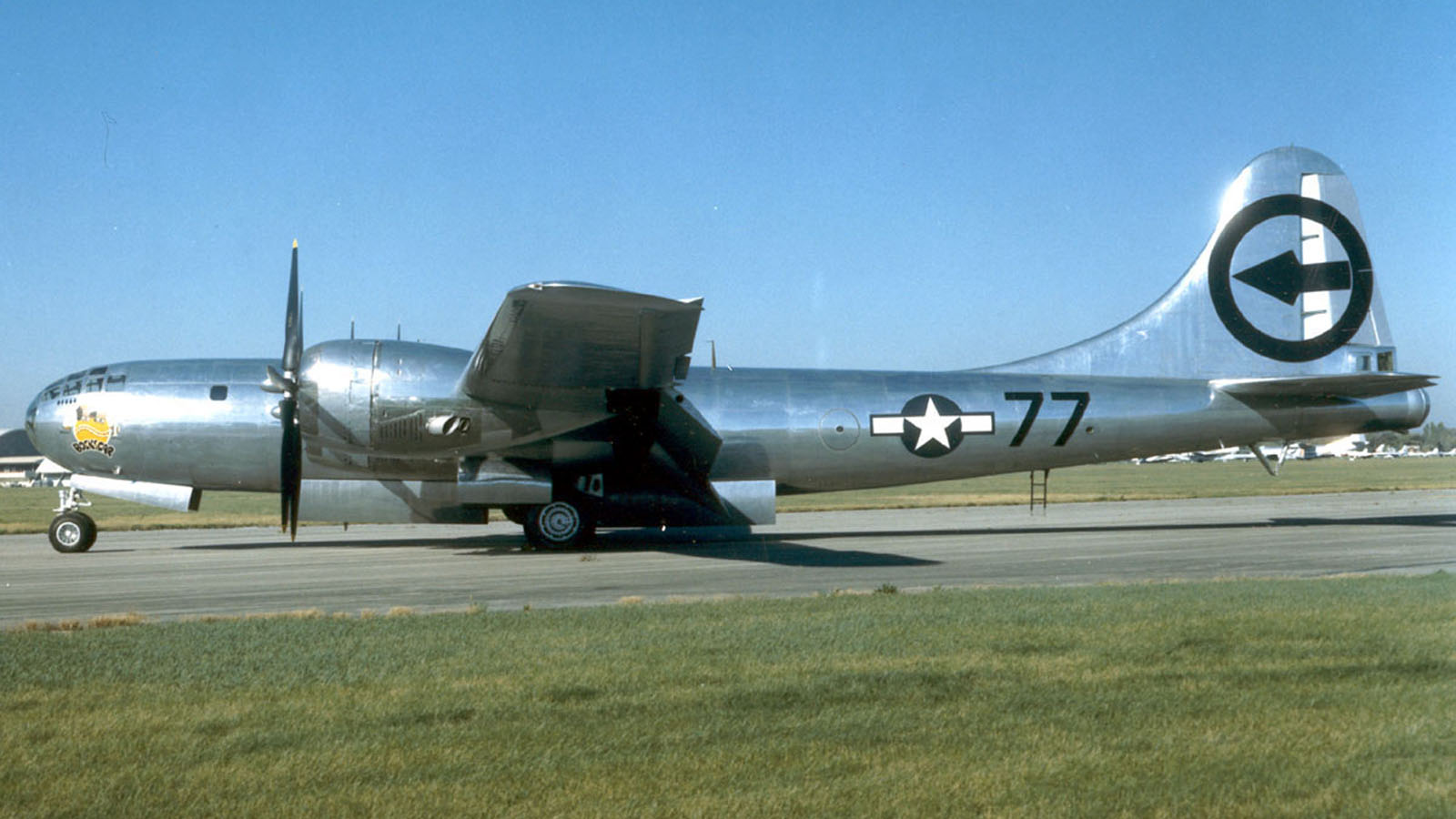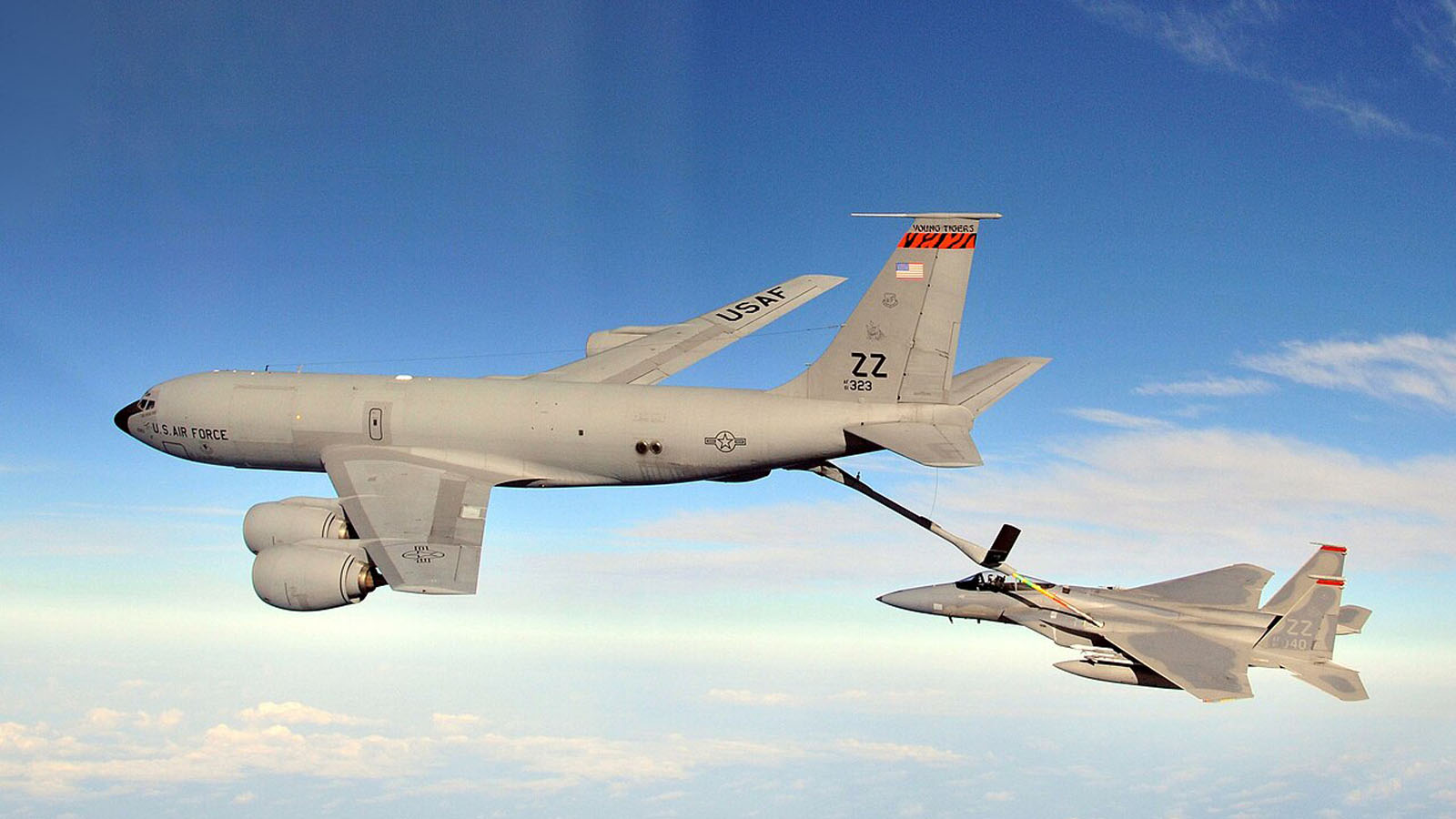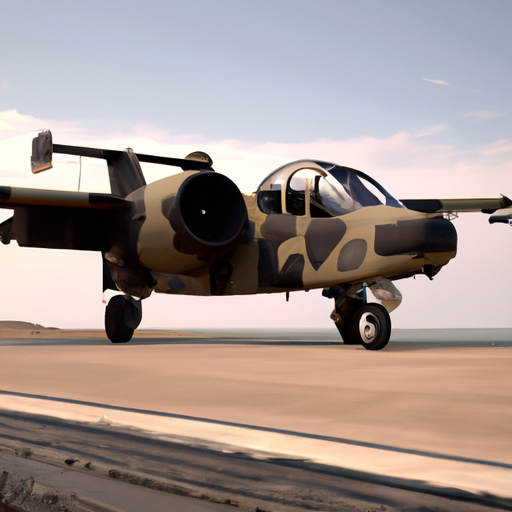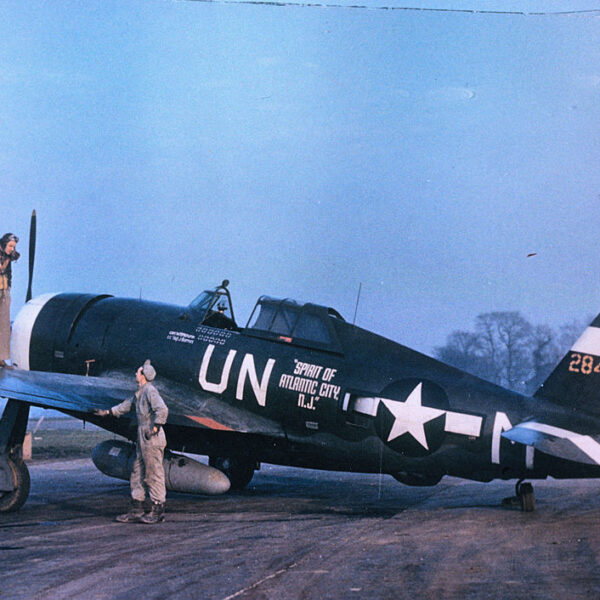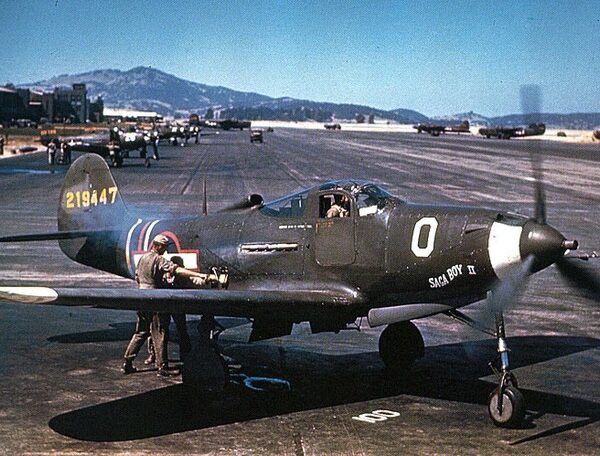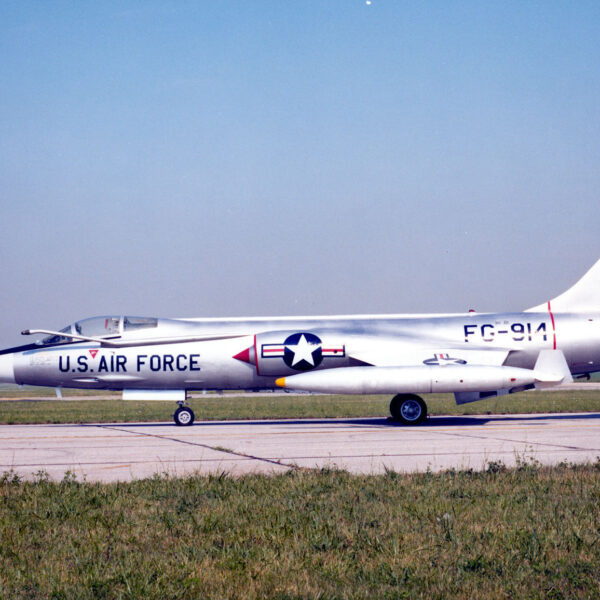“Unleashing the power of air transport with the Boeing KC-97 Stratofreighter.”
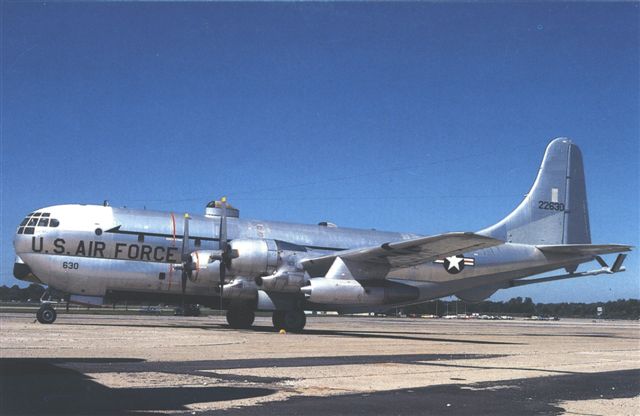
History and Development of the Boeing KC-97 Stratofreighter
The Boeing KC-97 Stratofreighter is a military aerial refueling and transport aircraft developed by the American aerospace company Boeing in the 1950s. It was a derivative of the Boeing C-97 Stratofreighter, a long-range heavy transport aircraft used by the United States Air Force (USAF) during World War II. The KC-97 was specifically designed to meet the growing demand for aerial refueling capabilities in the post-war era.
The development of the KC-97 began in 1944 when the USAF recognized the need for a dedicated aerial refueling aircraft. At the time, the only way to refuel aircraft in mid-air was through a “looped hose” system, which was time-consuming and dangerous. The USAF saw the potential of using a dedicated tanker aircraft to refuel multiple planes simultaneously; thus, the KC-97 project was born.
Boeing was awarded the contract to develop the KC-97 in 1945, and the first prototype flew in November of that year. The KC-97 was essentially a modified version of the C-97, with the addition of a flying boom refueling system and extra fuel tanks. It also had a reinforced floor to accommodate the weight of the fuel and a larger cargo door for more effortless loading and unloading.
The KC-97 was powered by four Pratt & Whitney R-4360 Wasp Major radial engines, which gave it a maximum speed of 375 mph and a range of over 3,000 miles. It had a maximum takeoff weight of 175,000 pounds and could carry up to 6,000 gallons of fuel for aerial refueling. In addition to its primary role as a tanker, the KC-97 could also be used as a transport aircraft, with a capacity of up to 134 passengers or 83 stretchers for medical evacuation missions.
The first production model of the KC-97, the KC-97A, was delivered to the USAF in 1950. It was followed by the KC-97B, which had improved engines and a larger fuel capacity. The KC-97C, introduced in 1953, had a strengthened airframe and increased fuel capacity, making it the most widely produced variant of the KC-97. In total, 888 KC-97s were built, with the last delivered in 1956.
The KC-97 was crucial to the USAF’s operations during the Cold War. It was used extensively for aerial refueling of strategic bombers, such as the B-47 and B-52, essential for the USAF’s nuclear deterrence strategy. The KC-97 also played a vital role in the Korean War which was used to refuel fighter jets and transport troops and supplies.
In addition to its military use, the KC-97 significantly impacted the commercial aviation industry. The KC-97’s large cargo and long-range capabilities made it an ideal aircraft for commercial airlines. Many KC-97s were converted into civilian airliners; some were used as passenger planes for the famous Berlin Airlift in 1948.
Despite its success, the KC-97 was eventually replaced by more advanced aerial refueling aircraft, such as the KC-135 Stratotanker, in the late 1950s. However, some KC-97s continued to serve in the USAF until NASA used the early 1970s and a few for various research and transport missions.
Today, the KC-97 is a significant milestone in aerial refueling and transport aircraft history. Its development and deployment paved the way for more advanced and efficient tanker aircraft, which play a crucial role in modern military operations. The KC-97’s legacy lives on and will always be remembered as a vital part of aviation history.
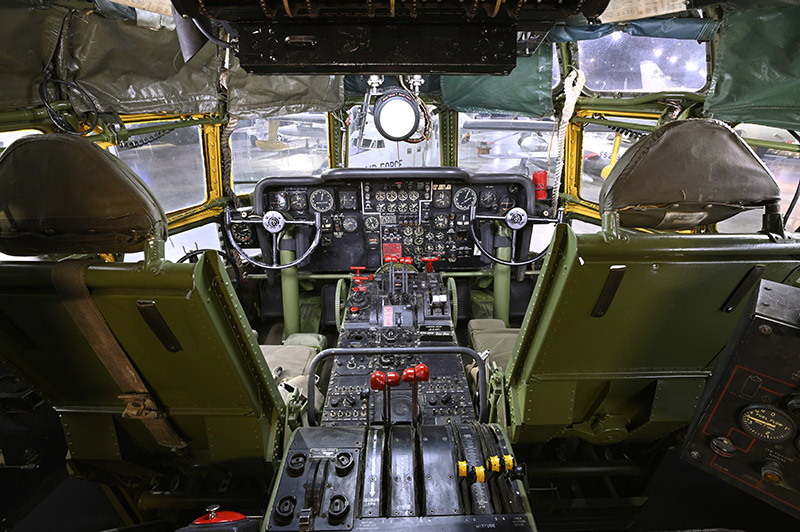
Key Features and Specifications of the KC-97 Stratofreighter
One of the most notable features of the KC-97 is its ability to refuel other aircraft in mid-air. This was a crucial function during the Cold War, as it allowed for extended flight times and increased range for fighter jets and bombers. The KC-97 was equipped with a flying boom, a long, extendable tube that the boom operator could maneuver to contact the receiving aircraft’s receptacle. This process required precision and skill, and the KC-97’s boom operators were highly trained to ensure successful refueling operations.
In addition to its aerial refueling capabilities, the KC-97 also served as a transport aircraft for personnel and cargo. It had a spacious cargo hold that could accommodate up to 83 passengers or 30,000 pounds of cargo. This made it a versatile aircraft that could be used for various missions, including troop transport, medical evacuation, and cargo delivery.
The KC-97 was powered by four Pratt & Whitney R-4360 Wasp Major radial engines, each producing 3,500 horsepower. These powerful engines gave the aircraft a maximum speed of 375 miles per hour and a range of 3,300 miles. It also had a service ceiling of 30,000 feet, allowing it to operate at high altitudes and avoid enemy fire.
One of the most distinctive features of the KC-97 was its double-decker design. The upper deck was used for the cockpit and crew quarters, while the lower deck housed the cargo hold and refueling equipment. This design allowed for efficient use of space and made the KC-97 stand out among other military transport aircraft of its time.
The KC-97 also had a unique tail design, with a triple tail configuration that gave it a distinct appearance in the sky. This design was chosen to improve stability and control during flight, especially during aerial refueling operations. The triple tail also allowed more accessible access to the cargo hold, providing a larger opening for loading and unloading.
Regarding specifications, the KC-97 had a wingspan of 141 feet and a length of 117 feet. It weighed 175,000 pounds when fully loaded and had a maximum takeoff weight of 175,000. It required five crew to operate, including the pilot, co-pilot, navigator, flight engineer, and boom operator.
The KC-97 was also equipped with advanced avionics and navigation systems for its time. It had a radar system for navigation and weather detection and radio communication equipment for communication with other aircraft and ground control. These systems were constantly updated and improved throughout the KC-97’s service life, making it a reliable and efficient aircraft for its missions.
In conclusion, the Boeing KC-97 Stratofreighter was a groundbreaking aircraft that played a crucial role in the USAF’s operations during the Cold War. Its aerial refueling capabilities, spacious cargo hold, and advanced design made it a versatile and reliable asset for various missions. Its legacy lives on, and the KC-97 will always be remembered as a key player in military aviation history.
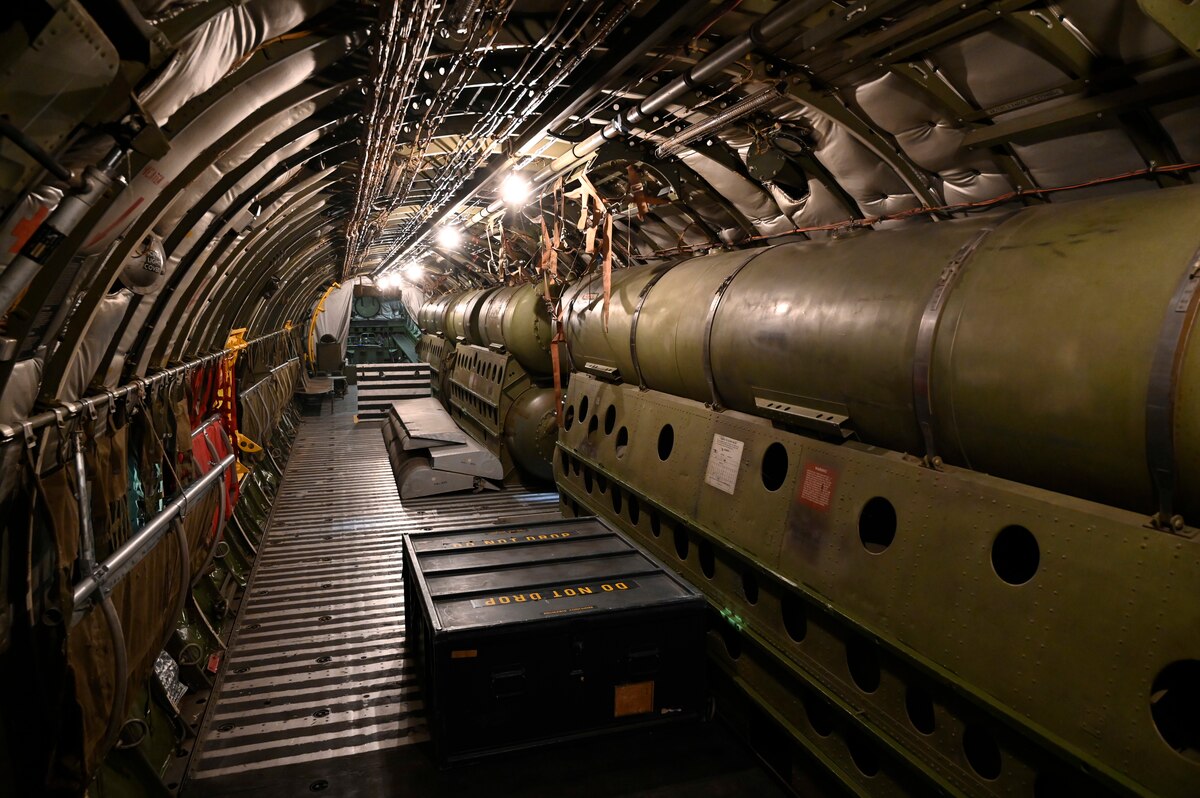
Military Applications and Operations of the KC-97 Stratofreighter
The Boeing KC-97 Stratofreighter is a military aircraft that has played a significant role in various operations and applications throughout its service. Developed from the successful Boeing C-97 Stratofreighter, the KC-97 was explicitly designed for aerial refueling and transport missions. With its large cargo capacity and ability to refuel other aircraft in mid-air, the KC-97 quickly became a crucial asset for the United States Air Force (USAF) during the Cold War and beyond.
One of the primary military applications of the KC-97 was its role in aerial refueling. During the Cold War, the USAF needed a way to extend the range of their bombers and fighter jets without having to land and refuel. The KC-97 provided the perfect solution with its advanced aerial refueling capabilities. With its large fuel tanks and a hose-and-drogue system, the KC-97 could refuel multiple aircraft simultaneously, allowing them to stay in the air for extended periods and reach their targets without making a pit stop.
In addition to aerial refueling, the KC-97 was crucial in transport missions. With its spacious cargo hold, the KC-97 could transport troops, equipment, and supplies to various locations worldwide. During the Korean War, the KC-97 was used to transport troops and supplies to the front lines, providing vital support to ground forces. It was also used for medical evacuation missions, transporting wounded soldiers from the battlefield to medical facilities.
The KC-97 was also utilized in strategic airlift operations, such as the Berlin Airlift in 1948. When the Soviet Union blockaded West Berlin, the USAF needed a way to supply the city with essential goods and supplies. The KC-97 was crucial in this operation, flying over 200,000 missions and delivering over 2.3 million tons of supplies to the city. This demonstrated the versatility and reliability of the KC-97 in critical military operations.
Aside from its primary roles in aerial refueling and transport, the KC-97 also had other military applications. It was used as a flying command post, providing communication and coordination for ground forces during combat operations. It was also equipped with radar and electronic countermeasures, making it a valuable asset in electronic warfare.
The KC-97 also had a significant impact on search and rescue operations. Equipped with a hoist and rescue equipment, the KC-97 could locate and rescue downed pilots and crew members in remote or hostile areas. This capability proved crucial during the Vietnam War, where the KC-97 was used to rescue numerous downed pilots and crew members.
In addition to its military applications, the KC-97 also played a role in scientific and research missions. In the 1950s, the USAF used modified KC-97s to launch and recover experimental aircraft and satellites. This allowed for the testing and development of new technologies and capabilities, further showcasing the versatility and adaptability of the KC-97.
Despite being retired from active service in the 1970s, the KC-97 continues to impact military operations and applications. Its legacy lives on through its successor, the KC-135 Stratotanker, which is still in use by the USAF today. The KC-97’s contributions to aerial refueling, transport, strategic airlift, search and rescue, and scientific missions have solidified its place in military history as a crucial and versatile aircraft.
In conclusion, the Boeing KC-97 Stratofreighter has played a significant role in various military applications and operations throughout its service. From aerial refueling and transport to strategic airlift and search and rescue, the KC-97 has proven to be a versatile and reliable asset for the USAF. Its legacy continues, and its contributions to military operations will not be forgotten.
Legacy and Impact of the KC-97 Stratofreighter on Aviation History
The Boeing KC-97 Stratofreighter, also known as the “Strat,” was a military aerial refueling and transport aircraft that played a significant role in aviation history. Developed from the successful B-29 Superfortress, the KC-97 was the first aircraft specifically designed for aerial refueling and became the backbone of the United States Air Force’s (USAF) Strategic Air Command (SAC) during the Cold War. Its legacy and impact on aviation history are still felt today, even though it has been retired from service for over 50 years.
The KC-97 was first introduced in 1950 and remained in service until 1978, with over 800 units produced. Its primary role was to refuel other aircraft in mid-air, extending their range and allowing them to stay in the air for longer periods. This was a crucial capability during the Cold War when the USAF needed to maintain a constant presence in the air to deter potential threats from the Soviet Union. The KC-97’s ability to refuel multiple aircraft simultaneously made it a valuable asset for the USAF, and it quickly became the backbone of its aerial refueling fleet.
Aside from its role in aerial refueling, the KC-97 also served as a transport aircraft, carrying troops, cargo, and equipment to various locations worldwide. Its large cargo hold and ability to operate from short and unimproved runways made it a versatile and reliable transport aircraft. During the Korean War, the KC-97 was crucial in transporting troops and supplies to the front lines, earning it the nickname “The Flying Gas Station.”
The KC-97’s legacy and impact on aviation history can be seen in its influence on future aircraft designs. Its success as an aerial refueling and transport aircraft paved the way for developing the larger and more advanced KC-135 Stratotanker, which is still in service today. The KC-135 was based on the design of the KC-97, with improvements in speed, range, and fuel capacity. The KC-135 has been a vital asset for the USAF, serving in various conflicts and operations, including the Vietnam War, Operation Desert Storm, and the ongoing Global War on Terrorism.
The KC-97 also had a significant impact on the commercial aviation industry. In the 1950s, Boeing developed a civilian version of the KC-97, the Model 377 Stratocruiser. This aircraft was the first pressurized commercial airliner and could carry up to 100 passengers. It was a luxurious and comfortable aircraft with amenities such as a lounge, sleeping berths, and a lower deck dining room. The Stratocruiser was a popular choice for long-distance flights, and its success paved the way for future commercial airliners, such as the Boeing 707.
The KC-97 also played a crucial role in developing air-to-air refueling techniques and procedures. Before the KC-97, aerial refueling was a dangerous and challenging task, with a high risk of accidents. The KC-97’s advanced refueling system and training programs helped standardize and improve aerial refueling operations’ safety. This paved the way for developing more advanced aerial refueling techniques, such as the “boom and receptacle” method used by the KC-135 and other modern aircraft.
In conclusion, the Boeing KC-97 Stratofreighter was a groundbreaking aircraft that played a significant role in aviation history. Its legacy and impact can still be seen today in the development of future aircraft and aerial refueling techniques. The KC-97’s contributions to the USAF and commercial aviation industry have solidified its place in history as a crucial and influential aircraft.
Notable Variants and Modifications of the Boeing KC-97 Stratofreighter
The Boeing KC-97 Stratofreighter was a military aerial refueling and transport aircraft that was developed from the C-97 Stratofreighter. It served as a vital component of the United States Air Force’s (USAF) strategic airlift and aerial refueling operations during the Cold War. The KC-97 was in service from 1950 to 1978 and underwent several notable variants and modifications throughout its operational lifespan.
One of the most significant variants of the KC-97 was the KC-97G, which was introduced in 1954. This variant featured upgraded engines, a strengthened airframe, and a larger fuel capacity, allowing it to carry more fuel for aerial refueling missions. The KC-97G also had a redesigned boom operator’s compartment, which improved visibility and made it easier for the operator to perform their duties. This variant was used extensively during the Vietnam War, where it played a crucial role in refueling fighter jets and bombers.
In 1956, the USAF introduced the KC-97L, a modified version of the KC-97G. The KC-97L had a longer fuselage and increased fuel capacity, allowing it to carry more cargo and fuel for longer distances. It also had upgraded engines, which improved its performance and made it more efficient in aerial refueling operations. The KC-97L was used primarily for transporting troops and cargo to remote locations and aerial refueling missions during the Vietnam War.
Another notable variant of the KC-97 was the KC-97F, which was introduced in 1957. This variant was equipped with two J47 turbojet engines in addition to its four-piston engines, which significantly boosted speed and performance. The KC-97F was primarily used for aerial refueling operations, and its increased speed allowed it to keep up with faster jet aircraft. It was also used for transporting cargo and troops, and it played a crucial role in the Berlin Airlift in 1948.
In the late 1950s, the USAF began to phase out the KC-97 in favor of newer, more advanced aerial refueling and transport aircraft. However, the KC-97 remained in service for several more years, and in 1963, the USAF introduced the KC-97H, a modified version of the KC-97G. The KC-97H had upgraded engines, a strengthened airframe, and improved avionics, which made it more efficient and reliable in aerial refueling and transport operations. It was also used for transporting troops and cargo during the Vietnam War.
In addition to these notable variants, the KC-97 underwent several modifications throughout its operational lifespan. One of the most significant modifications was the addition of the Flying Boom, a telescoping tube extending from the rear of the aircraft to transfer fuel to other aircraft during aerial refueling. This modification significantly improved the KC-97’s capabilities and made it a more efficient and effective aerial refueling platform.
The KC-97 also underwent modifications to its cargo compartment, allowing it to carry a variety of cargo, including vehicles, supplies, and troops. It was also equipped with a rear loading ramp, making loading and unloading cargo easier. These modifications made the KC-97 a versatile and reliable transport aircraft, and it was used extensively during the Korean War and the Vietnam War.
In conclusion, the Boeing KC-97 Stratofreighter underwent several notable variants and modifications throughout its operational lifespan. These variants and modifications greatly improved its capabilities and made it a vital component of the USAF’s strategic airlift and aerial refueling operations. The KC-97 played a crucial role in various military operations and remains a significant part of aviation history.
Conclusion
In conclusion, the Boeing KC-97 Stratofreighter was a versatile and reliable aircraft that played a crucial role in military and civilian operations during the mid-20th century. Its ability to transport cargo and personnel and serve as a refueling tanker made it a valuable asset for various missions. Despite being retired from service in the 1970s, the KC-97’s legacy lives on through its contributions to aviation history and its influence on future aircraft designs.
